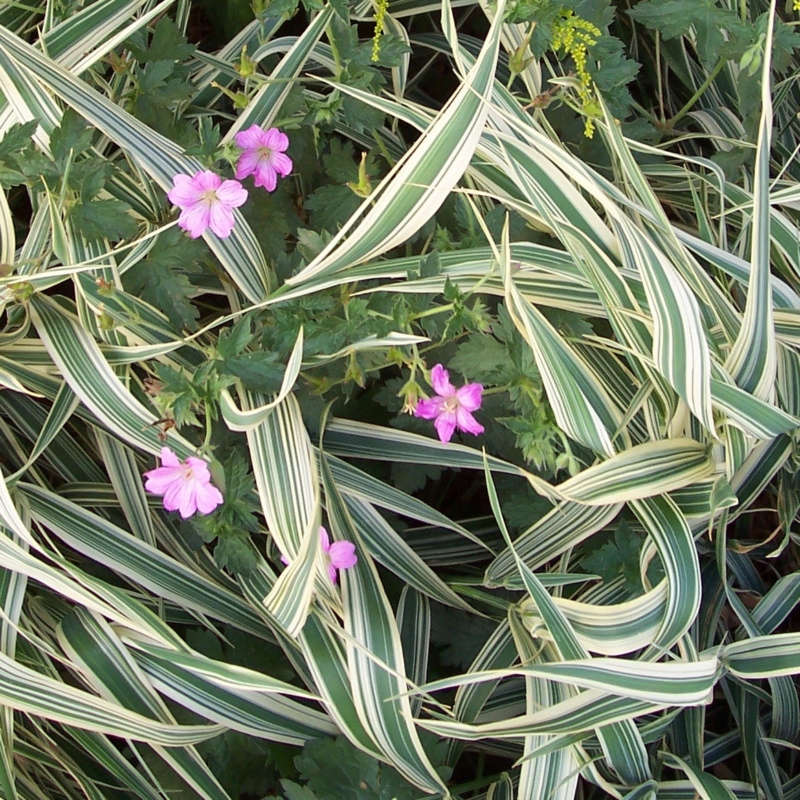

Perennial ribbon grass (Phalaris) grows about 2 feet tall and spreads quickly, becoming invasive if not contained. Think of it as an attractive option for a container plant. Planting it in a garden can be trouble, and planting it in open spaces can choke out native wildflowers and grasses.
Ribbon grass is attractive, but invasive, with fast-growing tendencies that make it a good choice for containers.
In a shady spot where nothing else will grow, perennial Phalaris grasses will be less prone to spreading and may be useful as ground cover, to stabilize a slope or to prevent erosion at the edge of a pond.
Depending on the cultivar, Phalaris grasses will thrive in a wide range of climates. They are native to Europe, Asia, and Africa, as well as to North America and can survive winters in USDA growing zones 2 to 9.
If you are looking for a mid-height ornamental grass to grow in wide swaths in a meadow garden or landscape, ribbon grass is probably not the best choice (consult a landscape designer for an expert’s opinion). Other ornamental grasses to consider include Calamagrostis (feather reed grass), Miscanthus (maiden grass), and Muhlenbergia (muhly grass). To see how different grasses look like in a landscape, see one of our favorite gardens at Vineyard Haven: A Napa Valley Garden That Belongs to the Land.
v5.0
When you register as a free Member of the Remodelista family of websites (Remodelista, Gardenista, and The Organized Home), you gain access to all current posts plus 10 archived posts per month, our internal bookmarking tool, and the community bulletin board.
Member benefits include:
For $5/month ($59.99 paid annually) you'll enjoy unlimited, ad-free access to Remodelista, Gardenista, and The Organized Home and all the benefits of Membership.
Subscriber benefits include:
For $5/month ($59.99 paid annually) you'll enjoy unlimited, ad-free access to Remodelista, Gardenista, and The Organized Home and all the benefits of Membership.
Subscriber benefits include:
Benefits include:
For $5/month ($59.99 paid annually) you'll enjoy unlimited, ad-free access to Remodelista, Gardenista, and The Organized Home and all the benefits of Membership.
Subscriber benefits include:
When you register as a free Member of the Remodelista family of websites (Remodelista, Gardenista, and The Organized Home), you gain access to all current posts plus 10 archived posts per month, our internal bookmarking tool, and the community bulletin board.
Member benefits include:
If at any time you want to become a Subscriber and enjoy unlimited, ad-free access to all our content, just go to the My Account link and choose Subscribe.
Advertising funds our work at Gardenista and helps us provide you with a daily dose of garden inspiration & design. We hope you’ll consider disabling your adblocker for Gardenista so we can continue our mission: a well-designed garden for all.
Thank you for your support.